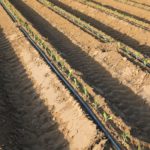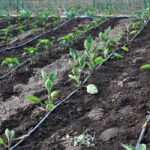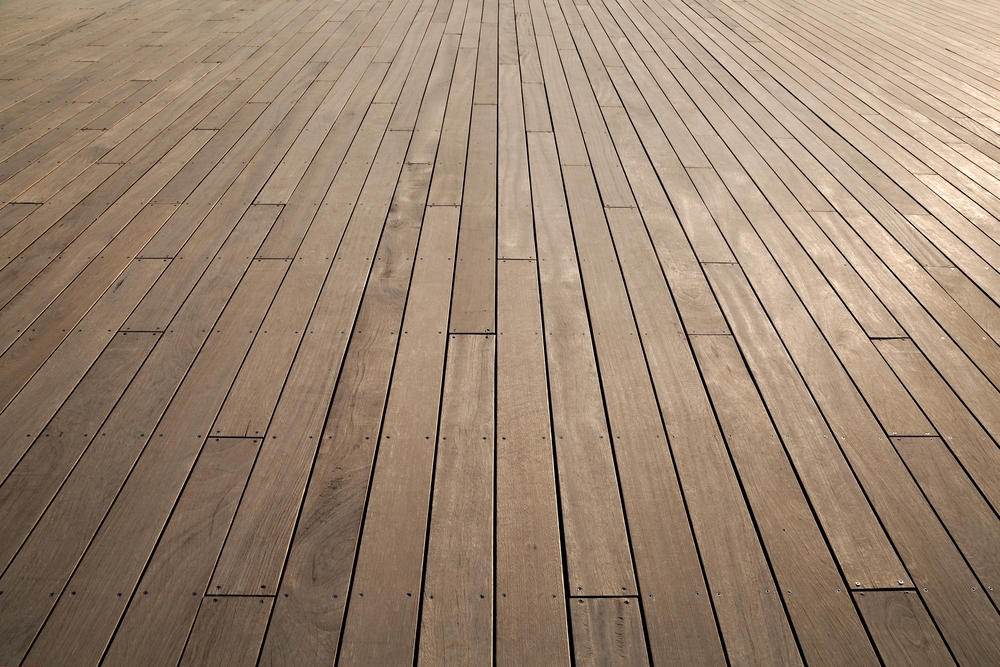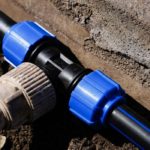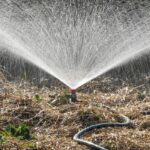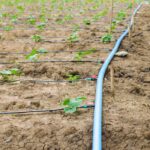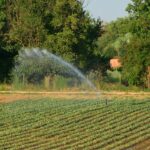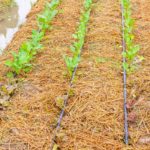Drip irrigation, also called trickle irrigation, is a watering method whereby the water is applied directly — or allowed to ‘drip’ — to the plant roots. Because a relatively small amount of water is applied at once, there’s very little loss of nutrients due to runoff and soil erosion. But should drip irrigation network be placed below or above the surface of the soil?
Drip irrigation lines can be buried. However, buried tubes are prone to damage by rodents and other animals, so digging shallow trenches and covering them with mulch is the best way to proceed. You can also hide your lines with raised beds, or choose tubes that are colored like the surroundings.
Drip irrigation is an excellent way to water potted plants, vegetable gardens, and fruit trees, but you need to take certain steps to make sure it’s done right. Let’s look at whether drip irrigation should be buried or not, and we’ll also consider the benefits and disadvantages of both above-ground and underground lines.
Should You Bury Your Drip Irrigation Line?
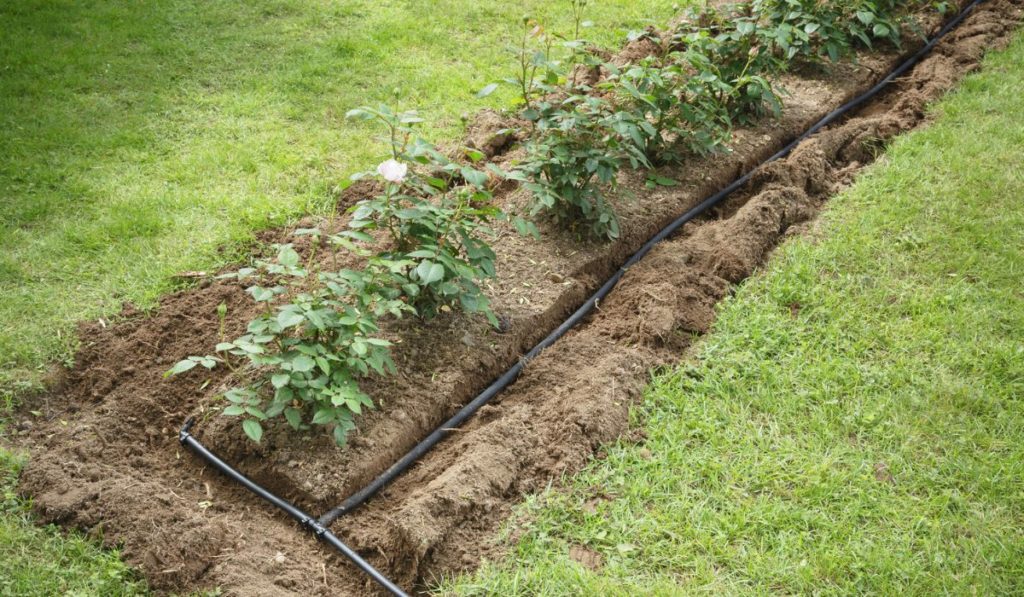
You can bury your drip irrigation lines (on Amazon) underground; however, it’s best not to bury them too deep unless doing so is specifically recommended by the manufacturer. Keep in mind that rodents that burrow in the ground like gophers and rats can damage the tubing by chewing through it.
If the tubing is underground, it’s also quite hard to locate any leaks. Make sure to regularly check your system to ensure that everything is running properly.
Pressurizing the system before burying it reduces the risk of tubing collapse. Installation of an air vent relief valve (on Amazon) is also recommended in subsurface systems.
How to Hide Your Drip Irrigation Lines
Instead of burying your drip lines, you can also hide the tubing that snakes around your garden. This will preserve the aesthetics of your garden and give it a pristine look.
Here are some techniques for hiding the lines:
Cover Them With Mulch
Dig shallow trenches to lay down the tubing so that they’re just below the surrounding soil level. Avoid putting dirt over them; instead, cover them with mulch. You can also use a low-spreading plant to hide the drip tubes.
Use Color Camouflage
Another way to hide the drip irrigation tubes is by using color camouflage. Drip irrigation tubes are available in various colors. You can choose a color of the tubing that blends with the surrounding soil so that it doesn’t stand out.
Run the tubes beneath raised beds
Using this method, you can easily hide the drip irrigation lines in your garden. When planning your garden, pay special attention to where you’re going to place your raised beds.
Make sure that you construct them in a way that makes it easier to run the drip lines through or below them. This will keep the hoses out of sight while they provide water to the raised beds at ground level.
How Deep Should a Drip Irrigation Line Be Installed?
How deep you should bury your drip irrigation lines depends on your gardening needs. First, you’ll have to dig trenches that run from the valves to where you want to lay down the tubing.
The poly tubing used in drip irrigation should be at least six inches deep, while the PVC pipes should be at least 12 inches deep.
Underground vs. Above-Ground Lines
Whether you have underground or above-ground lines depends on the type of garden you have and its unique watering needs. It also depends on personal preference. Both have benefits and drawbacks, and you should consider them carefully before laying down your tubing.
Benefits of Above-Ground Lines
Drip irrigation comes in handy when you need to water oddly-shaped sections of your garden, vines growing on a trellis, or hanging baskets that are quite impossible to be watered by manual watering cans or sprinkler systems. Laying down the tubes of this system above ground has the following benefits:
- Easy to detect leakage: As the tubing is visible, any leakage can be detected quickly. You can also check for signs of wear and tear and make repairs accordingly.
- Convenient to add tubes: As you add plants to your landscape, you might need to add more tubes. This process is convenient if your tubes are above ground. You can also easily add emitters (on Amazon) if you find that a plant is not receiving enough water.
Drawbacks of Above-Ground Tubes
If your drip irrigation tubes are above ground, then you might face the following drawbacks:
- Tripping hazard: The above-ground tubes pose a tripping hazard. It’s quite possible to fall over them while working in the landscape. Putting stakes into the ground can help minimize this risk.
- Easily damaged: These tubes can be easily damaged if they’re run over with a tiller or mower or stepped on. Constant exposure to sunlight can also cause the tubing to break down.
Benefits of Underground Lines
Drip irrigation systems are suitable for garden beds, hedges, vegetable gardens, and areas where plants will flourish, such as perennial gardens. Having the lines of this system underground has the following benefits:
- Eliminates nutrient loss: Water is applied directly to the roots of the plants, which ensures hardly any nutrient loss due to leaching.
- Preserves the aesthetics of your garden: Underground drip lines give your garden a neat look. As the tubing is not visible, it stops being an eyesore.
- Safe from lawn mower strikes: Drip lines that are underground aren’t damaged by mowers.
Drawbacks of Underground Lines
Laying the lines underground has the following drawbacks:
- Difficult to maintain: Detecting the source of the leakage is a hassle in underground tubes. It’s also hard to perform repairs and replacements on underground drip lines.
- Damage by animals: The underground tubing is prone to damage by rodents and rats chewing on it.
Whether you place your drip irrigation lines above ground or underground, it’s essential to keep the recommended distance between the line and the plant in mind. The maximum distance between a drip line and a plant is 12 inches.
How Far Can You Run a Drip Line?
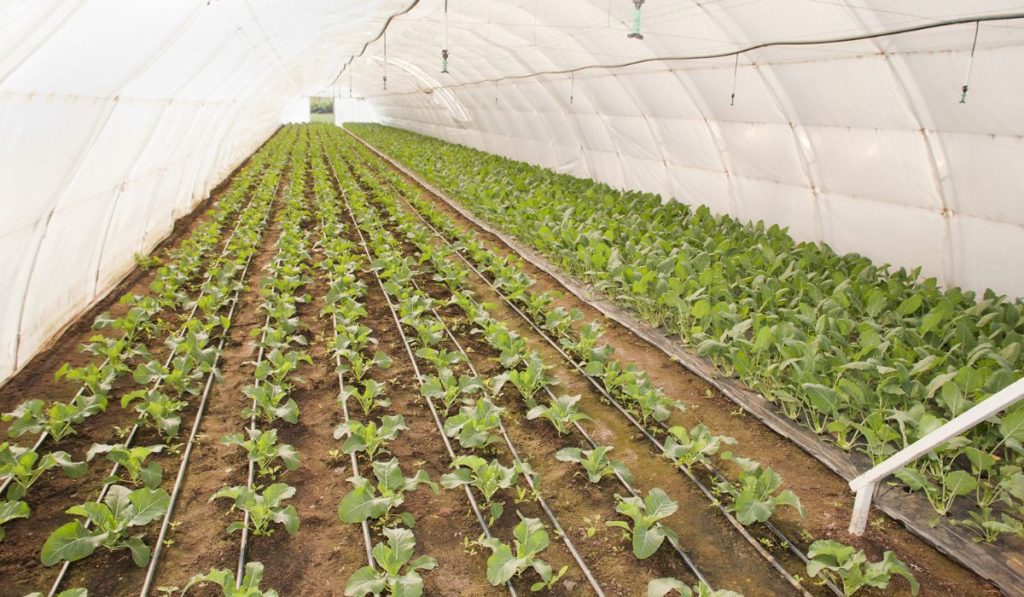
How far you can run a drip irrigation line depends on two factors: the water pressure and the width of the line. The ratio between the irrigation tube’s width and length should be properly proportioned to ensure the best results.
It’s also vital to take the drip irrigation line’s water pressure into consideration. Remember that too much pressure and multiple fittings can blow out the irrigation line.
The recommended length of ½-inch tubing is up to 200 linear feet, while ¼-inch tubing shouldn’t be more than 19 feet in length.

